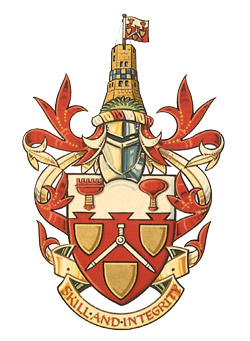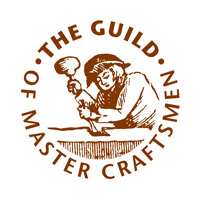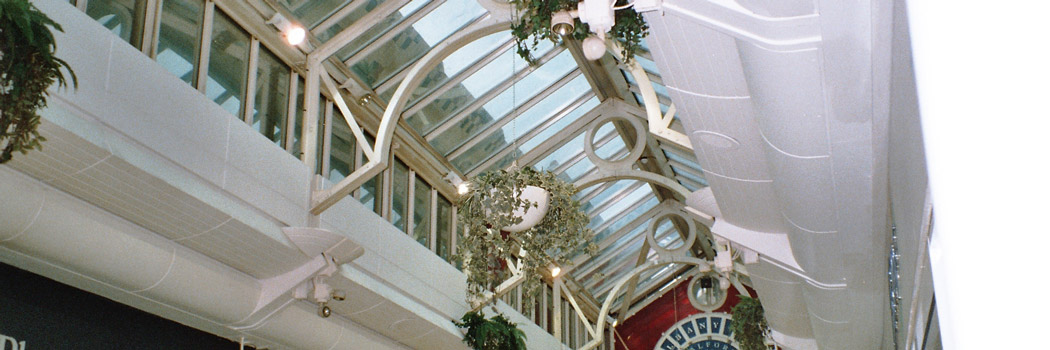FIBROUS PLASTERWORK & GLASS REINFORCED GYPSUM (G.R.G.)
Plaster Restorations manufacture and install high quality Fibrous Plaster and Glass Reinforced Gypsum.
Our company uses only the finest of materials and provides highly trained craftsmen, in order to attain standards of quality in product and service that are second to none.
Virtually any shape that can be drawn, no matter how complicated, can be reproduced in high quality GRG. Being class O-Rated for spread of flame, it provides scope for incorporation into ceilings, bulkheads, linings, lighting troughs, column casings and other feature components.
Materials
Fibrous Plaster is a form of plasterwork that has been used for around 250 years. The concept is the use of pure gypsum (class A) calcinated sulphate hemi-hydrate plaster (commonly known as Plaster of Paris), encased within jute canvass scrim, along with wooden plasterers laths. In addition to these wooden plasterers laths the incorporation of larger timbers (i.e. slater’s lath), cast into the plaster, can form further support and rigidity. This then forms a lightweight but ridged cast construction which eliminates the need to build-up a form or shape using successive layers of plaster in-situ. Obviously Fibrous Plaster can therefore reduce weight and used quantities of materials tremendously. It can also save time and labour costs, along with reducing on-site programmes. As nearly always Fibrous Plaster is manufactured off-site in workshops, from moulds, manufactured to drawings and site dimensions. Casts can be delivered to site in sections and fixed over framework and voids to create cover for services etc.
These methods are all still used today but we now have access to modern materials. Harder plasters can be used in place of Plaster of Paris or diluted concentrations of P.V.A. bonding agent can be gauged into the plaster to achieve harder surfaces. Instead of the use of jute canvass scrim we can use continuous strand glass fibre matting. Wooden laths and timbers can now be supplemented or changed to M/F channels, straps and ‘T’ bar sections. These new casting systems are known as Glass Reinforced Gypsum (G.R.G). They produce an even stronger and more lightweight construction with the added benefit of class O fire rating for spread of flame.
Cast Construction
Fibrous Plaster Plainface in generally formed as a cast over either, a mould or cast in flat sheets directly from the workbench surface. Casts are taken, working up to a shellacked and greased timber grounds and mould/bench.
All Jute Canvass and Laths/Timbers are first of all cut to size and laid-out for use. A first layer of plaster with a minute amount of retarding agent (glue size or similar) is first brushed then splash applied to the surface with all edges of the cast quickly struck-off (wiped clean). This first layer is known as the firstings. Then a second layer of plaster, with a greater amount of retarding agent is splashed over the firstings before they set. This layer is known as the seconds. Jute canvass is then lightly pressed and brushed into this layer. Soaked jute ropes are laid all around the perimeter of the cast and at intervals on the latitude and longitude at set distances apart. Then pre-soaked Laths are brushed in plaster and pressed into these ropes. The edges of the jute canvass are then turned and folded-in over the cast and brushed-in with more on the seconds. A further layer of jute canvass is then pressed and tucked over the entire structure, working inside the perimeter framework. This is then brushed-in using the seconds again, taking care not to create webbing or air voids in-between the lath supports. The entire cast is then lightly splashed over using the seconds. All perimeter edges are struck-off again including the latitudal and longitudal laths in order to create uniformity and reduce weight. All of the edges can then have further thickened plaster applied to build-up to a required thickness. The cross laths can be built-up if required in a way of ruling over the entire cast with a long straight edge, piece of timber or aluminium.
Larger soaked and brushed timbers can be incorporated in much the same way around the perimeter or at cross points and encased within the casts. Timbers can also be added to the back of casts by wadding (jute canvas soaked in plaster) them into position after striking-off is complete.
Rebates can be incorporated into the perimeter of casts by casting over a shellacked and greased lath or timber. These rebates are required at times in order to form joints between casts, which can be scrim taped and filled to avoid cracking.
Modern methods use mild steel strapping instead of laths, laid over the ropes (ideal for screw fixing). Or M/F ‘U’ Channel for cross sections (used for Wire and Wadding). M/F ‘T’ bar sections cast upside down can be very useful for wire and wadding or to bolt onto hangers. Much depend upon site conditions and differences or suitability of suspension systems.
Methods of Fixing
Casts can either be nailed or screwed through their face, at the positions of the Laths and into Timber fixings (joists, frameworks M/F channels etc.). All holes are then filled-in and made good. They can also be wadded (canvas soaked in plaster), using clip wads, to clip from the cast and over a channel or other cast or from a hook or screw and back to the cast.
Casts can also be Wire & Wadded. This is usually done by first drilling small pilot holes to each side of the cast cross supports. Wound 16 gauge tying wire in 2 or 4 ply is inserted through one hole, around the cross support and up through the hole on the other side of it. The two ends are hung over a suspension channel from above the ceiling and wound and tourniqueted-up to a required level. Wires underneath cross members are carefully scribed into the face plaster and filled. All joints between casts are cleated by using wooden blocks placed above and below the cast, then Wired between the blocks and wound tight into position. Once casts are level plaster wads are laid over the wires and joints from behind the ceiling. Once wads are set, wire cleats and blocks are cut and removed from the face of joints. These joints are then scrim taped and fine filled.
We have carried out many G.R.G. projects including:
- Salford Shopping City, Manchester
- Millgate Shopping Centre, Bury, Lancashire
- Debenhams Department Stores such as Scarborough and Bromley
- Morrison’s Supermarkets such as Beverley and Walsall
- Carlisle Law Courts
- BBC Broadcasting Centre, Leeds
Plaster Restorations can work closely with:
- Town Planners
- Local authorities
- Property holding companies
- Developers
- Shopping Centres
- Department Stores
- Supermarkets
- Cinemas
- Television & Film Studios
- Offices
- Architects
- Interior Designers
- Project Managers
- Building inspectors
- Quantity surveyors
- Contractors
- Insurance companies & loss adjusters
- Home owners
We can provide surveys and budgets upon forthcoming or existing projects to your properties.
Plaster Restorations believe that through our skill and expertise, we can offer a great many benefits to our clients to enhance a future working relationship. We would welcome the opportunity of visiting your offices, projects or homes with a view of discussing our systems in more detail.



